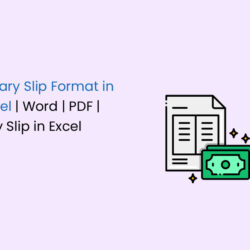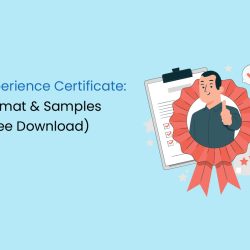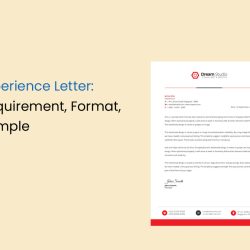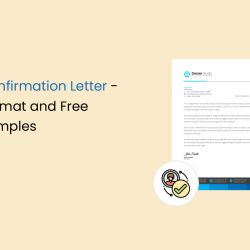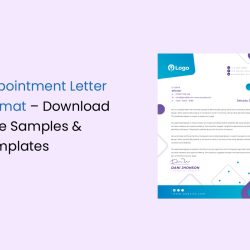Technology is best when it brings people together. – Matt Mullenweg.
HR tech has evolved from just simplifying back-end tasks to genuinely empowering employees. One of the most significant innovations in modern HRMS employee self-service systems is Employee Self-Service (ESS). These platforms streamline HR operations while giving employees control over their personal information, requests, and communication—all within a secure employee self-service portal.
With an ESS portal, employees can handle everyday HR tasks independently—like updating personal information or downloading important documents—without contacting HR each time. For HR teams and business leaders, it’s more than just convenience. It’s a smart way to save time, reduce repetitive work, and keep employees more engaged and self-reliant.
This blog will explore employee self-service, why it matters, its key features, benefits, implementation challenges, and how TankhaPay aligns with ESS capabilities to support India’s informal and distributed workforce.
What is Employee Self-Service?
Employee Self Service (ESS) is a digital functionality commonly offered in HRMS ESS platforms. It allows employees to independently access and manage personal, employment, and payroll-related information via an ESS portal or mobile app. Rather than relying on HR for every task, employees can:
- Download payslips and Form 16 from their employee self-service log
- Update bank or address details
- Submit reimbursements or declarations
- And more, all within a secure employee self-service portal
ESS transforms the conventional top-down HR model into a more decentralised, employee-driven system that encourages transparency and engagement.
Why Does Employee Self-Service Matter?
HR chores, such as leave requests or address updates, can cause communication breakdowns, paperwork overload, and avoidable errors in developing organisations. Employee Self-Service cuts down on unnecessary back-and-forth between employees and HR, making life easier for everyone.
- 1. More Control in the Hands of Employees:
With access to a well-designed ESS portal, employees can quickly view their payslips, apply for leave, or check their attendance—without waiting on HR. Having the tools to manage their work info creates a stronger sense of trust and involvement in the organisation. - 2. Lighter Workload for HR Teams:
One of the biggest wins with a strong ESS portal is how much time it saves your HR team. Instead of being buried in routine tasks—like replying to leave balance queries or re-sending payslips—they can finally focus on what moves the needle: planning better policies, supporting people, and building a healthier work culture. The day-to-day admin still gets done, just without the constant back-and-forth. - 3. Better Accuracy, Fewer Compliance Headaches:
When employees update their records—such as banking details or address changes—it reduces errors. With the help of an HRMS employee self-service system, the data stays current and reliable, which is essential for smooth payroll processing and legal compliance. It also removes the risks that come with outdated or mismatched information. - 4. Enabling a Remote Work Culture:
With hybrid and remote work now a standard part of modern business, it’s crucial that employees can still interact with HR systems no matter where they are. ESS makes this possible by offering access to HR services anytime, anywhere, helping organisations remain connected and efficient across geographies. - Leave and Attendance Management:
Employees should be able to view their attendance history, track leave balances, apply for time off, and monitor approval statuses in real time—ideally with notifications. - Payslip and Salary Information:
The portal should allow users to view and download salary slips, tax declarations, and annual statements without HR intervention. - KYC and Profile Updates:
Secure editing capabilities for personal details, bank accounts, PAN/Aadhaar, and emergency contact numbers help maintain up-to-date and verified records. - Expense and Tax Declarations:
A sound ESS system enables digital claim submissions, investment proofs, and other declarations that reduce paperwork and assist during payroll processing. - Mobile and Multilingual Support:
Given India’s diverse workforce and growing mobile usage, ESS should be available on smartphones and in multiple regional languages. - Centralised Document Repository:
Whether it’s HR policies, offer letters, or company announcements, an ESS portal provides employees with a single place to find all critical documents quickly and easily. - Reduced Admin Workload:
When employees can take care of basic tasks themselves—like applying for leave or updating their contact details—HR teams don’t have to step in every time. That means fewer emails, fewer follow-ups, and much more time freed up for the work that demands strategic thinking. - Tangible Cost Savings:
Switching to digital tools for routine HR tasks can quietly save a lot more than you’d expect. No stacks of printed forms, no manual data entry, and fewer hours spent on repetitive admin work. These small changes add up—cutting costs and making everyday operations more efficient. - Better Data Accuracy:
When employees can update their records through an HRMS employee self-service platform, the chances of outdated or incorrect information drop dramatically. This keeps everything—from payroll to compliance—in sync and avoids the risk of costly errors. - Faster Response Times:
ESS platforms allow employees to share information quickly and get updates without delays. Because the system sends automatic alerts, employees can receive approvals for their leave requests faster and get quick responses to any questions or updates they ask; this helps make HR processes more responsive, timely, and efficient. - Boosted Employee Engagement:
When employees can manage their personal and work-related information, it increases their trust towards the organisation. This results in employees feeling valued and respected. A satisfied employee has more involvement, a stronger connection to the company, and improved retention. - Resistance to Change:
Some employees may not feel confident or comfortable using a new digital platform—especially those unfamiliar with technology- making it harder for them to use the system properly, leading to slower adoption across the organisation. As a result, usage rates might remain low in the beginning. Organisations should offer easy-to-understand onboarding sessions and hands-on training to avoid such difficulty. Employees who feel guided and supported are likelier to use the system confidently and regularly. - Data Security Concerns:
Security matters—especially when your ESS portal holds sensitive information like payslips, contact details, and ID numbers. That’s why having strong security features—like data encryption, password protection, and access based on job roles—is essential. It’s not just about protecting the system; it’s about earning employees’ trust by showing their personal information is handled with care. - Seamless Integration with Existing Tools:
For an HRMS employee self-service platform to work well, it needs to connect smoothly with the systems a company already relies on—like payroll software, attendance logs, or compliance trackers. Without this integration, things can get clunky fast, causing delays, confusion, and extra work for HR teams. When these systems don’t sync up properly, things fall through the cracks: data gets duplicated, updates are delayed, and teams waste time fixing avoidable mistakes. A smooth integration helps everything run like clockwork, with fewer hassles for HR and employees.
A good way to deal with this challenge is by choosing an HR platform that can easily connect with other systems; this is possible when the platform supports modular integration and uses open API. These APIs help different tools—payroll, attendance, or compliance software—work together without confusion. - Too Much Miscommunication:
When there’s no central system, HR updates can get buried in emails or passed along inconsistently—leaving employees unclear about policies or their records. - Outdated or Incorrect Records:
When there’s no central system, HR updates can get buried in emails or passed along inconsistently—leaving employees unclear about policies or their records. - Too Much Miscommunication:
Manual data entry is prone to slip-ups. Even small mistakes in contact details or banking info can cause bigger issues down the line. - HR Teams Getting Pulled Into Routine Tasks:
Instead of focusing on strategy or engagement, HR staff fielded repetitive requests—like sending payslips or updating employee info. - A Sense of Disconnect:
If employees don’t have easy access to their records, it creates a visibility gap. Over time, that lack of clarity can affect how much they trust internal systems—or the organisation itself. - Easy for Everyone to Use:
Whether it’s a factory worker marking attendance or a remote employee applying for leave, our ESS is built with simplicity. The interface is clean, multilingual, and requires zero training. - Mobile-First, Anytime Access:
HR doesn’t just happen at a desk. With TankhaPay, employees can view payslips, track leaves, update KYC details, or submit requests from their smartphones—anytime, anywhere. - Real-Time Notifications & Smart Approvals:
No more chasing emails or paperwork. TankhaPay sends instant updates on approvals, leave status, document uploads, and more—keeping everyone in the loop without manual follow-ups. - Built-In Compliance and Data Security:
We go beyond just access. Employee data is protected with enterprise-grade encryption and is fully compliant with Indian labour laws. TankhaPay ensures HR processes are efficient, safe, and compliant. - Empowerment Without Complexity:
The biggest benefit? Employees feel empowered. They no longer need to wait on HR for every small task, saving time and improving organisational transparency.
Key Features of a Good ESS Platform
A well-designed HRMS employee self-service solution should be easy to use across devices. Whether accessed via desktop or mobile, a robust self-service portal helps employees handle everything from leave requests to tax declarations. TankhaPay’s platform goes further by offering multilingual support and ensuring the ESS portal is truly inclusive.
Benefits of ESS for Employers and HR Professionals
Employee Self-Service (ESS) benefits employees and employers by making HR processes easier and more efficient. Its advantages become even clearer in companies growing quickly or managing a large workforce. As the number of employees increases, so do HR tasks and challenges. In such situations, ESS helps manage everything more smoothly by reducing manual work, improving communication, and ensuring employees can handle many of their HR needs without delays.
Employee Self-Service Implementation Challenges (And How to Overcome Them)
While we have talked about several benefits of self-service portals, here we’ll explore a few challenges that may come when implementing them successfully. Understanding these early on can help organisations plan better and ensure a smoother transition:
5 Common Challenges Faced Without ESS
Without a reliable employee self-service system, many HR processes become slow, error-prone, and heavily dependent on manual work. This affects efficiency and creates friction between employees and HR teams. Here are some of the most common issues that arise in the absence of an ESS portal:
When these minor issues pile up, they can slow down business operations, lower team morale, and make people feel less engaged at work. That’s why an innovative, user-friendly HRMS employee self-service platform isn’t just a nice-to-have—it’s something modern workplaces truly need.
Discover TankhaPay: All-in-one Human Resource Management Software
Unlike other platforms where HRMS ESS is an afterthought, TankhaPay has deeply embedded employee self-service into its core. Our platform is designed to work for India’s informal workforce—from onboarding to payroll—with an intuitive and powerful mobile-first, multilingual ESS portal.
From attendance tracking to payroll processing and HR management, TankhaPay has built-in self-service capabilities that empower employees to access what they need when needed—without waiting on HR intervention. This means employees can easily mark attendance, apply for leave, update their KYC details, download payslips, track their salary, claim reimbursements and advances, file an income tax declaration, check their ESI and PF details or raise a query – all from their mobile phones.
How TankhaPay Solves Real-World ESS Challenges
At TankhaPay, we go beyond offering just an ESS portal—we offer a platform that understands and supports HR teams and employees alike. Everything is designed for productivity, compliance, and transparency, from easy employee self-service login to real-time notifications.
By deeply integrating self-service features across its platform, TankhaPay doesn’t just support ESS—it simplifies, scales, and makes it work for every employee, everywhere.
Click here to learn more about the best HR software in India
Frequently Asked Questions (FAQs)
How does ESS improve HR productivity?
ESS automates routine tasks, reducing HR’s administrative workload and allowing teams to focus on strategic functions like talent management and employee engagement.
What are the key features of an effective ESS portal?
An effective ESS portal should include functionalities such as multilingual support, mobile accessibility, payslip download, KYC update, leave application, role-based access, and secure logins.
Can ESS be customised for different employee types like on-roll and off-roll staff?
Modern HRMS platforms offer ESS features tailored for on-roll, off-roll, blue-collar, and remote employees—ensuring usability across all workforce types.
How does ESS contribute to employee engagement?
By giving employees control over their HR data and tasks, ESS builds transparency, trust, and autonomy—leading to higher engagement and job satisfaction.
Is an ESS portal secure for handling sensitive employee data?
Yes, when built correctly, an ESS portal can be very secure. The best ones use tools like encrypted data storage, login verification methods (like OTPs or authenticator apps), and permission-based access so only the right people see the correct info. This helps keep things like salary details, IDs, and personal records protected.
How does ESS support compliance in payroll and employee management?
ESS reduces the risk of errors by maintaining updated employee records, accurately tracking attendance, ensuring timely approvals, and helping meet labour laws and compliance with regulations.
What are the cost benefits of using an HRMS with ESS features?
Companies save on printing, paperwork, manual data entry, and HR team bandwidth, reducing operational costs over time.
How does ESS facilitate remote and hybrid work models?
ESS technology enables hybrid and remote employees to access the information they need whenever or wherever they work, facilitating flexible work models.
Which is the best HRMS in India with a powerful Employee Self-Service feature?
TankhaPay is one of the best HRMS platforms in India, offering a multilingual, mobile-first ESS experience and integrated payroll, compliance, and workforce management features.





